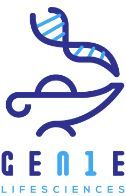Request Demo
Last update 08 May 2025
p38α x MAPKAPK2
Last update 08 May 2025
Related
5
Drugs associated with p38α x MAPKAPK2Target |
Mechanism MAPKAPK2 modulators [+1] |
Active Org. |
Originator Org. |
Active Indication |
Inactive Indication- |
Drug Highest PhasePhase 2 |
First Approval Ctry. / Loc.- |
First Approval Date20 Jan 1800 |
Target |
Mechanism MAPKAPK2 modulators [+1] |
Active Org. |
Originator Org. |
Active Indication- |
Inactive Indication- |
Drug Highest PhaseIND Application |
First Approval Ctry. / Loc.- |
First Approval Date20 Jan 1800 |
Target |
Mechanism JNK inhibitors [+2] |
Active Org. |
Originator Org. |
Active Indication |
Inactive Indication |
Drug Highest PhaseDiscovery |
First Approval Ctry. / Loc.- |
First Approval Date20 Jan 1800 |
1
Clinical Trials associated with p38α x MAPKAPK2NCT05795465
A Phase 2, Two-Part Study to Evaluate the Safety and Tolerability of GEn-1124 in Subjects with Acute Respiratory Distress Syndrome (ARDS)
GEn1E-1124-002 is a two-part Phase 2 study to evaluate the safety and tolerability of GEn-1124 in subjects with ARDS. Treatment with IV infusion dosing as early as possible after ARDS diagnosis. Subjects will be given a second dose approximately 8 hours after the first dose and will continue with twice daily dosing (BID regimen) for 5 days.
Start Date04 Apr 2023 |
Sponsor / Collaborator |
100 Clinical Results associated with p38α x MAPKAPK2
Login to view more data
100 Translational Medicine associated with p38α x MAPKAPK2
Login to view more data
0 Patents (Medical) associated with p38α x MAPKAPK2
Login to view more data
101
Literatures (Medical) associated with p38α x MAPKAPK201 May 2025·Biochemical Pharmacology
Discovery of a novel C2-functionalized chromen-4-one scaffold for the development of p38α MAPK signaling inhibitors to mitigate neutrophilic inflammatory responses
Article
Author: Chang, Yi-Han ; Tsai, Keng-Chang ; Lee, Yi-Chen ; Chi, Ching-Ho ; Fang, Shu-Yen ; Chen, Shun-Hua ; Cheng, Tzu-Peng ; Hung, Hsin-Yi ; Chen, Po-Jen
01 Mar 2025·The Journal of Pharmacology and Experimental Therapeutics
First-in-class mitogen-activated protein kinase (MAPK) p38α: MAPK-activated protein kinase 2 dual signal modulator with anti-inflammatory and endothelial-stabilizing properties
Article
Author: Vogel, Stefanie N ; Luo, Wendy ; Hasday, Jeffrey D ; Lal, Ritu ; Shapiro, Paul ; Cericola, Daniel ; Lewis, Daniel ; Tulapurkar, Mohan E ; Murphy, William A ; MacKerell, Alexander D ; Fletcher, Steven ; Mahmoud, Omar ; Shirey, Kari Ann ; Galan, Adam ; Thangaraju, Kiruphagaran ; McClean, Nathaniel ; Lugkey, Katerina
23 Jan 2025·Journal of Medicinal Chemistry
Discovery of a Novel p38α-MK2 Complex Inhibitor as a Potential Choice for Autoimmune Diseases
Article
Author: Wang, Siqin ; Jin, Lei ; Han, Tian ; Han, Long ; Jia, Xiangyu ; Hu, Zhilong ; Fu, Donglin ; Zhang, Xiaobing ; Xia, Yuanfeng ; Yang, Zimo ; Yang, Fanglong
Analysis
Perform a panoramic analysis of this field.
login
or

AI Agents Built for Biopharma Breakthroughs
Accelerate discovery. Empower decisions. Transform outcomes.
Get started for free today!
Accelerate Strategic R&D decision making with Synapse, PatSnap’s AI-powered Connected Innovation Intelligence Platform Built for Life Sciences Professionals.
Start your data trial now!
Synapse data is also accessible to external entities via APIs or data packages. Empower better decisions with the latest in pharmaceutical intelligence.
Bio
Bio Sequences Search & Analysis
Sign up for free
Chemical
Chemical Structures Search & Analysis
Sign up for free

